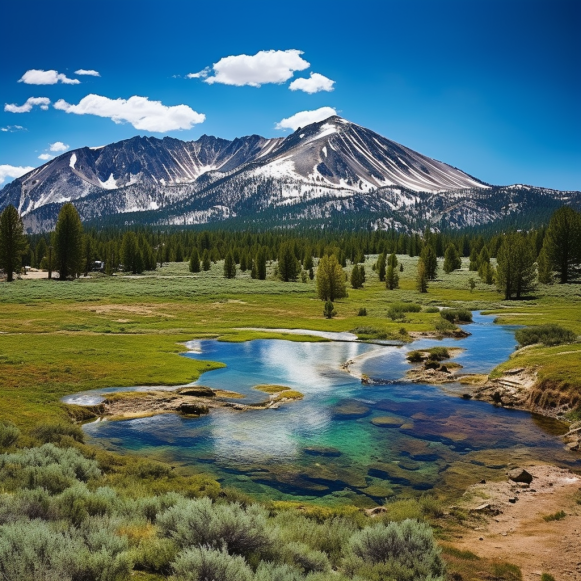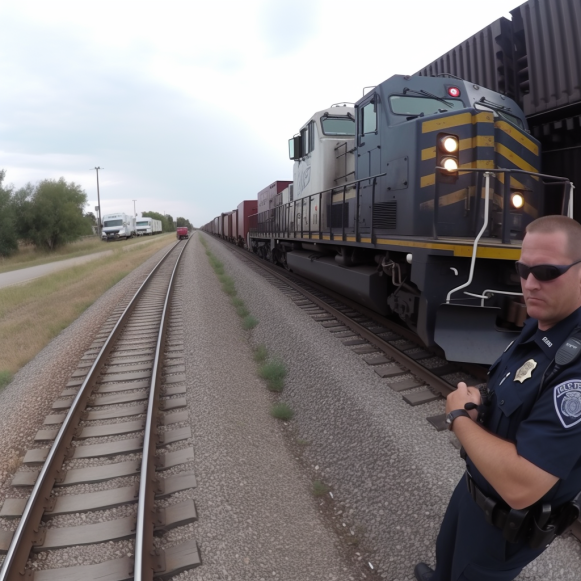What do more quakes at one of California’s riskiest volcanoes mean? Scientists think they know

One of California’s most dangerous volcanoes has been undergoing geological changes and seismic activity for decades, which can be a precursor to an eruption, but no supervolcanic eruptions are expected.
Caltech researchers studying the Long Valley Caldera, which includes the Mammoth Lakes area in Mono County, believe this. The caldera was designated by the US Geological Survey in 2018 as one of three volcanoes in the state, along with 15 others across the country, as a “very high threat,” the agency’s highest risk category.
Mt. Shasta in Siskiyou County and the Lassen Volcanic Center, which includes Lassen Peak in Shasta County, are the two other volcanoes in California with that classification. The threat assessment is defined as a combination of a volcano’s potential threat and the number of people and properties exposed to it, rather than a list of which volcanoes are most likely to erupt or a ranking of those that are most active.
The researchers’ findings were published in the journal Science Advances last week.
The Long Valley Caldera is a large crater east of the Sierra Nevada. It is located approximately 40 miles east of Yosemite Valley, 200 miles east of San Francisco, and 250 miles north of downtown Los Angeles. A caldera is formed when magma erupts or is extracted from beneath the ground.
A super-eruption about 760,000 years ago blasted 140 cubic miles of magma, blanketing much of east-central California in hot ash that was blown as far away as present-day Nebraska.
Scientists have long been interested in the Long Valley Caldera, where there has been an increase in earthquakes and ground movements that began four decades ago. In May 1980, there were four magnitude 6 earthquakes in the Long Valley area.
Changes in the shape of the ground and earthquake activity are commonly observed before eruptions, but this does not always imply that an eruption will occur soon.
The risk of a supervolcanic eruption in the Long Valley Caldera in our lifetime has long been thought to be extremely low, given that the magma beneath the area is clearly cooling — essentially continuing to calm down.
Nonetheless, the recent geological phenomena raised an important question for scientists: What does increased seismic activity and ground deformation mean? Is it a foreshadowing of something sinister?
According to Emily Montgomery-Brown, a USGS research geophysicist who was not involved in the Caltech study, scientists were looking for answers to two fundamental questions. Was there enough magma in the underground reservoir’s connected segments to combine and erupt? Or was there a more reassuring explanation for the earthquakes and ground movement, namely that as the cooling magma crystallized and solidified, other non-magma fluids rose to the surface, causing quakes?
The Caltech researchers concluded that the latter explanation appears to be the correct one. According to the university, this is based on high-resolution underground images that were recreated using several dozen seismometers, earthquake measurements, and a machine-learning algorithm.
“We don’t believe the region is preparing for another supervolcanic eruption, but the cooling process may release enough gas and liquid to cause earthquakes and small eruptions,” said Zhongwen Zhan, a Caltech geophysics professor and study co-author, in a statement.
Some scientists believe the Long Valley Caldera is moribund — essentially dead — and that any increased seismic activity is caused by fluids that are not magma but are still hot and moving to the surface as the magma cools and solidifies. Others, on the other hand, believe the Long Valley Caldera is active.
Montgomery-Brown, a Long Valley Caldera expert who now works for the USGS’ Cascades Volcano Observatory, said the most recent episode of increased earthquake activity in the area began in 2011 and was accompanied by ground deformation in which the land began to rise. That activity has slowed, and a quiet period has resumed since 2020.
However, she stated that a magmatic eruption is still something to consider. While the Long Valley Caldera’s magma is cooling and crystallizing, “there are extremely young lava flows” along the nearby Mono-Inyo Craters chain.
“And so even if the Long Valley magma reservoir is moribund, there are other pockets of magma in the area,” she said.
Other volcanoes in California are also dangerous. And eruptions could have long-term consequences for the entire state.
When wet, volcanic ash is conductive and could disrupt high-voltage lines that power millions of California homes. It could obstruct travel on Interstate 5, the main route connecting California and Oregon, by obscuring windshields and making roads slippery, if not impassable.
Hundreds of daily flights in Northern California and the Mammoth Mountain area could be disrupted, and jetliners could be brought down. And it has the potential to contaminate water supplies throughout the state (California’s largest reservoirs are located near the Shasta and Lassen volcanoes).
Mt. Shasta, California’s largest volcano, erupted frequently in prehistoric times but has been quiet since. And, like the Long Valley Caldera, the magma beneath Lassen Volcanic Center is cooling and contracting, according to Montgomery-Brown.
The last major destructive volcanic eruption in California occurred more than a century ago. Between 1914 and 1917, Lassen Peak erupted several times. One explosive eruption in 1915 obliterated a forest and produced a 30,000-foot-high mushroom cloud that could be seen as far away as Eureka and Sacramento, and blew volcanic ash 280 miles out, reaching Elko, Nevada.





